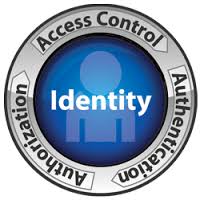3 Reasons You Are an Easy Cybercrime Target
 As we’ve mentioned before, more small and midsize businesses (SMBs) are falling victim to cybercrime. You might believe that hackers won’t bother targeting your business due to its small size. However, it is crucial to recognize that cybercrime aimed at smaller companies is undeniably escalating, and you could be the next cybercrime target if you do not take the necessary precautions.
As we’ve mentioned before, more small and midsize businesses (SMBs) are falling victim to cybercrime. You might believe that hackers won’t bother targeting your business due to its small size. However, it is crucial to recognize that cybercrime aimed at smaller companies is undeniably escalating, and you could be the next cybercrime target if you do not take the necessary precautions.
According to HP’s Cyber Security and Your Business report, Cybercrime costs SMBs 4.2 times more per employee than larger businesses, and 60% of SMBs that experience a data breach are out of business in six months.
So, why exactly are cybercriminals interested in your business, and more importantly, what actions can you take to combat this threat?
Why Small Businesses are Prone to Cybercrime
It’s essential for you to acknowledge the following three reasons why you may be seen as an easy target for cybercrime and take proactive and defensive measures to protect your business.
1. SMBs spend less on security while larger businesses are increasing their security protections.
- Your business is an easier cybercrime target because you are more likely to lack basic protections. In effect, you may attract cyber criminals because you are an easier target.
- Budget for, and implement, reasonable protections covering user identities, access controls, user permissions, data loss prevention, and employee awareness and training.
2. SMBs do not have in-house security expertise.
- Keeping up with risks and trends is time consuming, above and beyond ensuring that your security measures are updated and working on a day-to-day basis.
- Leverage technology and your IT partners for automated solutions and expertise, as well as on-going management of your security and privacy solutions.
3. SMBS are moving into the cloud.
- Using cloud applications and storage makes sense. But, your data is no longer behind a physical or logical “firewall”. Protecting your data means protecting the cloud systems and services you use.
- Always select business-grade services over consumer services. Implement all security features, including 2 Factor Authentication. And, when possible, integrate access to cloud services into a single system for managing user identities. And, do not forget to train, and periodically remind, your staff how their awareness and actions can allow or prevent an attack.
15 Actions You can take to Improve Your Cybersecurity
- Implement a robust cybersecurity strategy tailored to your business needs, including firewalls, intrusion detection systems, and antivirus software.
- Regularly update and patch all software and operating systems to protect against known vulnerabilities.
- Conduct regular security audits and risk assessments to identify and address potential weaknesses in your systems.
- Train your employees on cybersecurity best practices, such as recognizing phishing attempts, creating strong passwords, and handling sensitive data securely.
- Implement strict access controls and user privileges to limit unauthorized access to sensitive information.
- Encrypt sensitive data both in transit and at rest to protect it from interception or theft.
- Backup your data regularly and store backups in separate, secure locations to ensure data recovery in case of a breach or system failure.
- Develop and enforce a strong password policy, including the use of complex passwords and regular password changes.
- Enable multi-factor authentication (MFA) for all user accounts to add an extra layer of security.
- Monitor your network and systems for any unusual or suspicious activity using intrusion detection and prevention systems.
- Stay informed about the latest cybersecurity threats and trends through industry publications, forums, and reputable security organizations.
- Establish an incident response plan that outlines the steps to be taken in the event of a cybersecurity incident, including notification procedures and communication channels.
- Regularly educate your employees on emerging threats and provide ongoing training to ensure their knowledge remains up to date.
- Limit the use of personal devices for work-related activities and enforce strong security measures for those devices that are permitted.
- Partner with reputable cybersecurity vendors or consultants to get expert advice and assistance in securing your systems.
By implementing these actions and cybersecurity best practices, you can significantly reduce the risk of cybersecurity breaches and protect your business from potential threats. Remember, cybersecurity is an ongoing effort that requires continuous vigilance and adaptation to evolving threats.
It’s always a good time to perform a review of your IT security and data privacy policies, procedures, and systems. Doing so is an affordable way to protect your business, your employees, and your customers from cyber crime. The cost of prevention is miniscule compared to the cost of a breach.
Interested in ensuring you are protected, contact us for a free Cloud Advisor Session, or learn about our data protection solutions and our privacy solutions.

 For the second time this year, Yahoo! acknowledges a major security breach. This time, the breach occurred in 2013, resulting in the data loss of roughly 1 billion, (Yes, BILLION) accounts. More than usernames and passwords this breach included security questions and answers.
For the second time this year, Yahoo! acknowledges a major security breach. This time, the breach occurred in 2013, resulting in the data loss of roughly 1 billion, (Yes, BILLION) accounts. More than usernames and passwords this breach included security questions and answers.
 As reported by
As reported by 